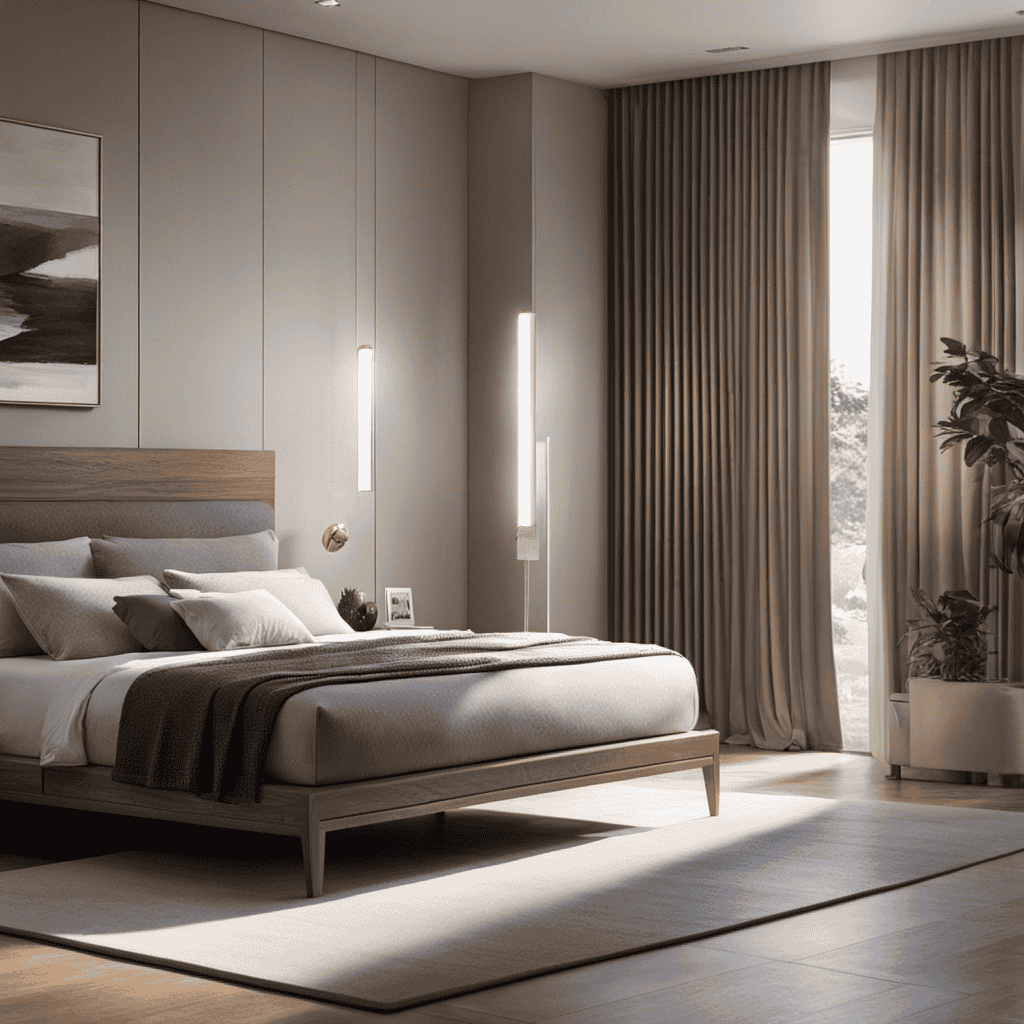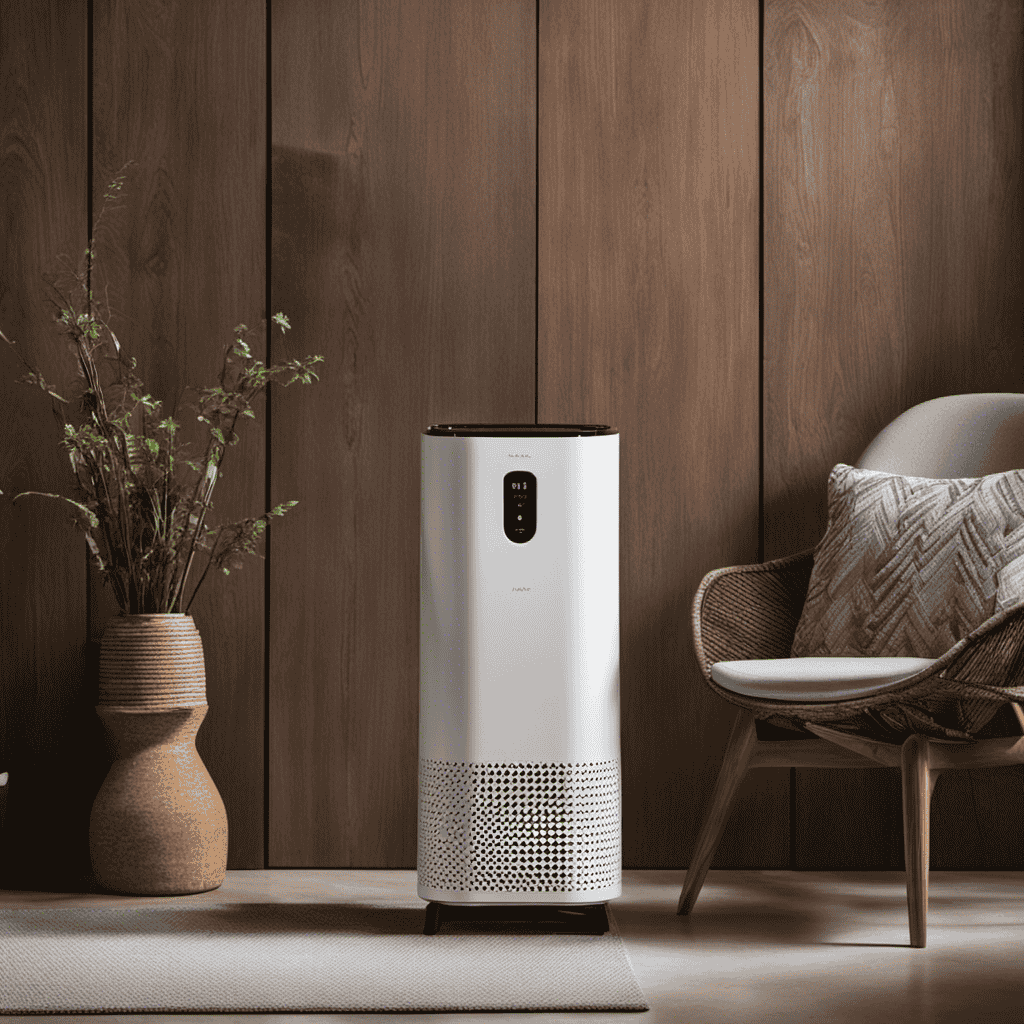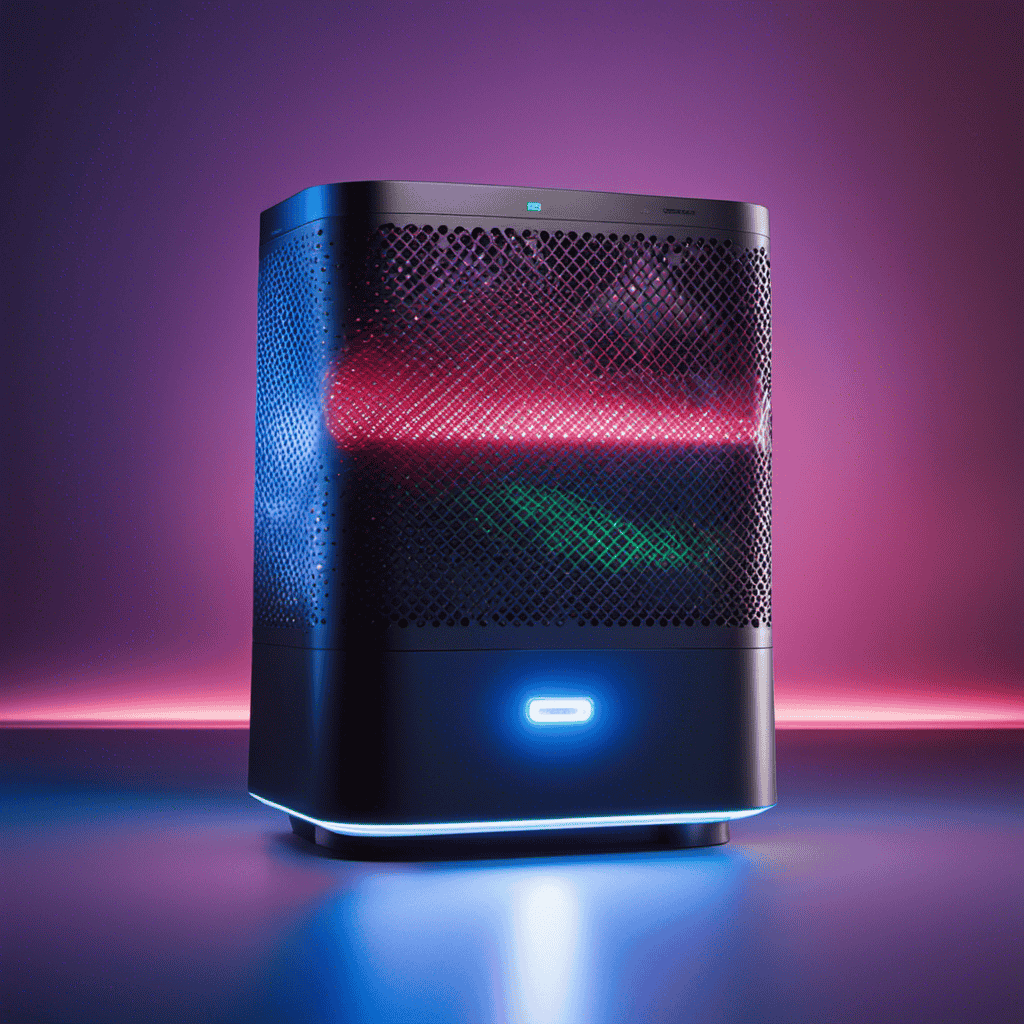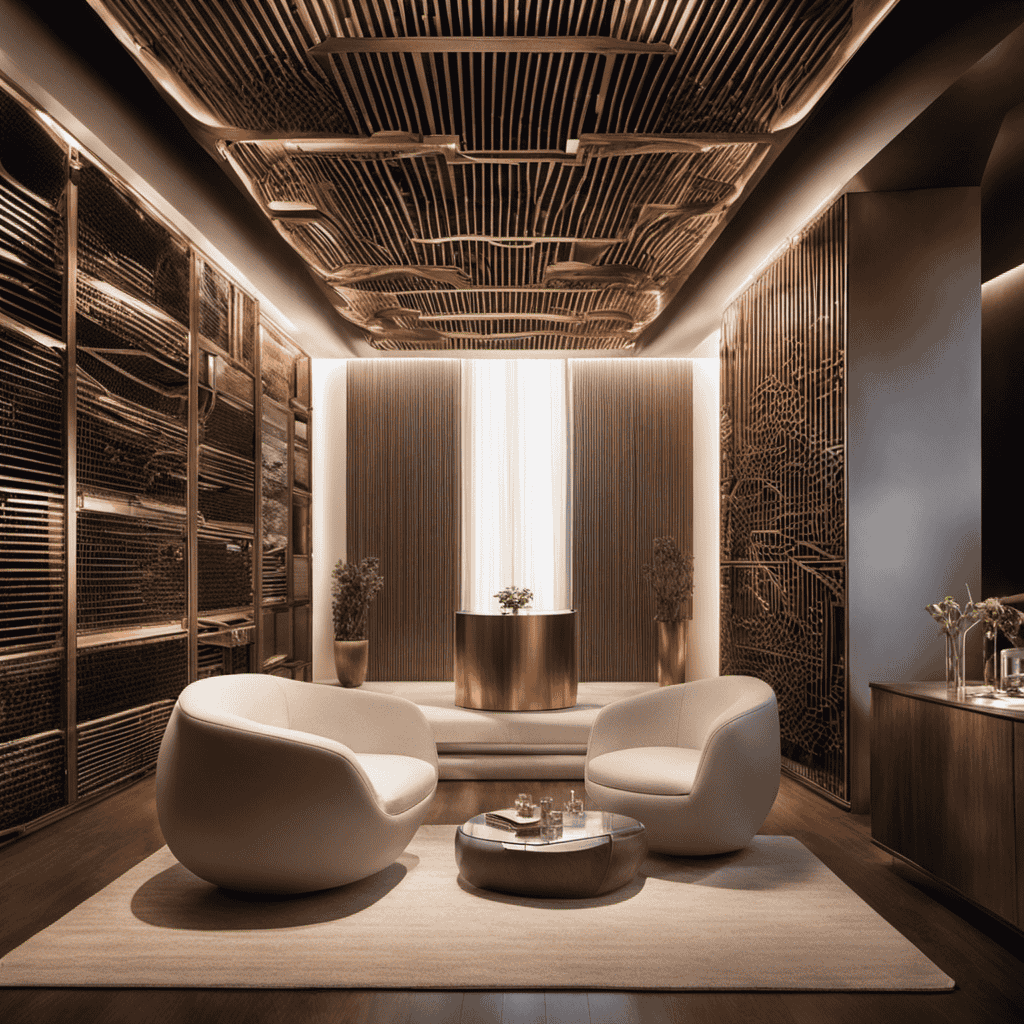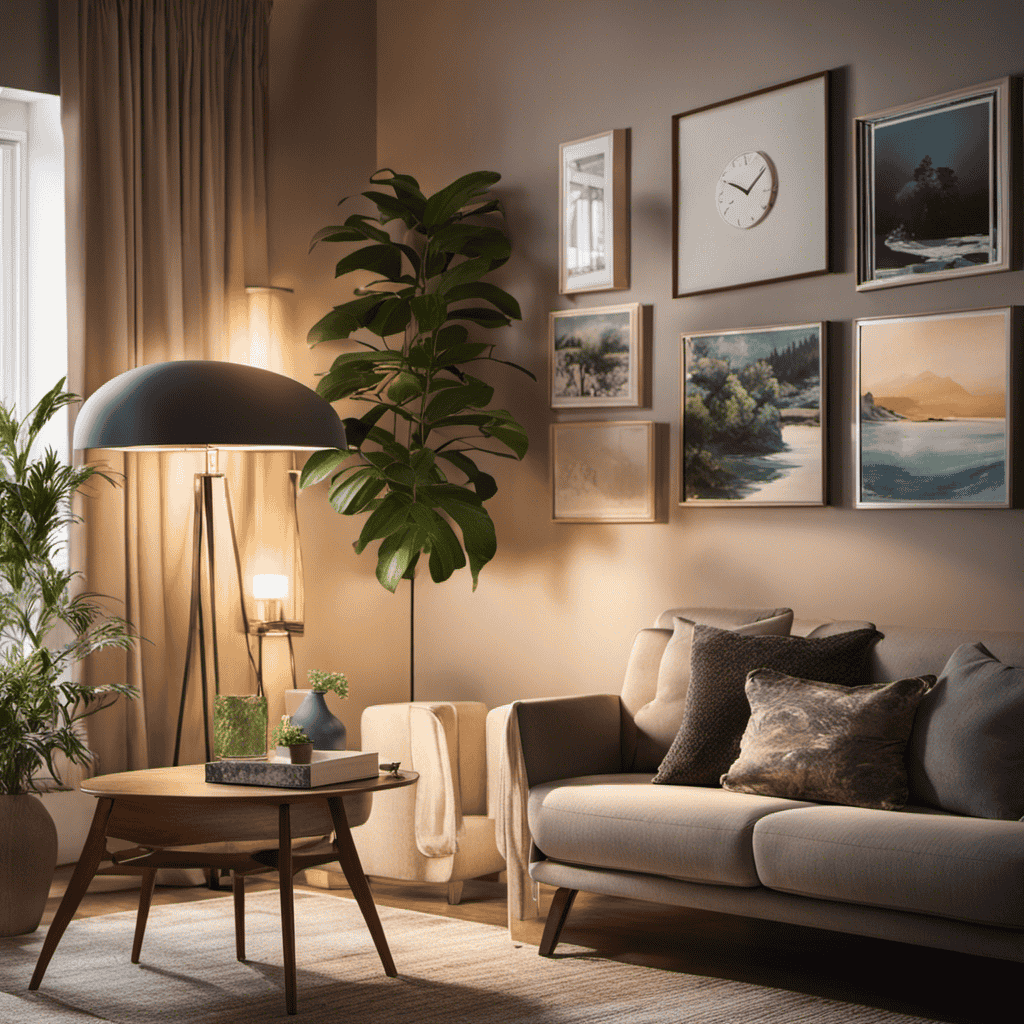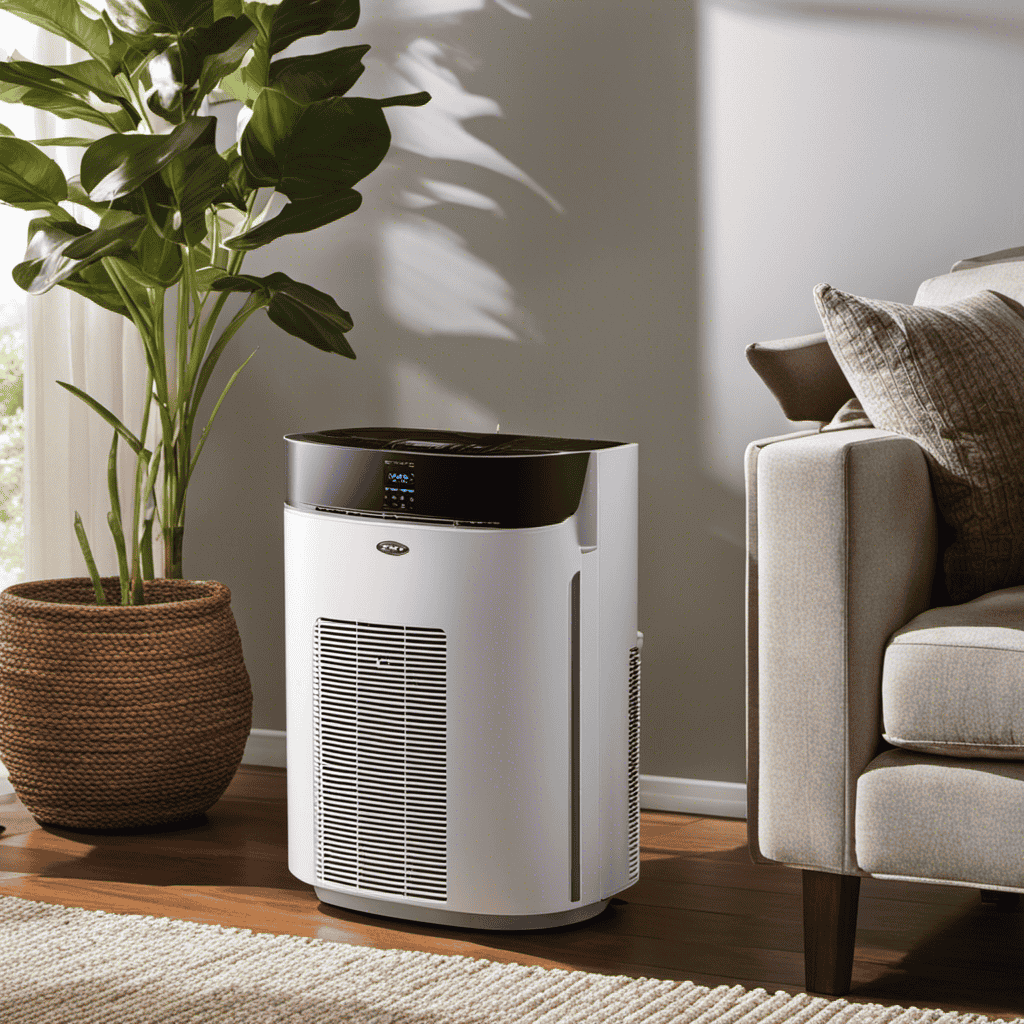I’ve constantly pondered the best location for my air purifier in the room. Discovering the ideal position is crucial for its ability to efficiently purify the air and enhance the quality of the indoor environment.
In this article, I will guide you through the process of determining the best placement for your air purifier. We will consider factors such as the size of your room, potential sources of indoor air pollution, and how to avoid common mistakes when positioning your purifier.
Let’s dive in and make sure we’re breathing clean, fresh air in our own homes.
Key Takeaways
- Room size affects air purifier effectiveness
- Place air purifier in an area with clear airflow path
- Avoid obstructing the purifier with furniture or walls
- Proper placement ensures optimal efficiency and lifespan of the purifier
Consider the Size of Your Room
You’ll want to consider the size of your room when deciding where to place an air purifier. The size of the room plays a crucial role in determining the effectiveness of the air purifier.
If the room is large, you will need a purifier with a higher CADR (Clean Air Delivery Rate) to ensure that it can effectively clean the air. On the other hand, if the room is small, a purifier with a lower CADR would suffice.
Additionally, the placement of the air purifier is important. It is recommended to place the purifier in an area where it has a clear airflow path and is not obstructed by furniture or walls. This allows for better air circulation and ensures that the purifier can effectively remove pollutants from the entire room.
Now that we have considered the room size and placement, let’s move on to identifying potential sources of indoor air pollution.
Identify Potential Sources of Indoor Air Pollution
To identify potential sources of indoor air pollution, it’s important to be aware of common culprits like cleaning products, pet dander, and cigarette smoke. These pollutants can have a significant impact on the air quality in our homes and workplaces.
To combat this issue, it is crucial to consider ventilation options and the importance of air quality testing. Ventilation options such as opening windows, using exhaust fans, or installing a whole-house ventilation system can help to improve the air circulation in our indoor spaces.
Additionally, regular air quality testing can provide valuable information about the presence of harmful pollutants and guide us in taking necessary measures to maintain a healthy indoor environment.
Determine the Optimal Placement for Maximum Air Circulation
Consider placing fans in strategic locations throughout your space to maximize air circulation. This is important because proper ventilation plays a crucial role in maintaining indoor air quality.
When it comes to air purifier placement, it’s essential to find the optimal spot to ensure effective purification while minimizing energy consumption. Here are four key factors to consider:
-
Size of the room: Larger spaces may require multiple fans or a more powerful fan to achieve adequate air circulation.
-
Proximity to pollutant sources: Place fans near potential sources of indoor air pollution to help direct and remove contaminated air.
-
Airflow patterns: Observe the natural airflow in your space and position fans accordingly to enhance air movement and distribution.
-
Accessibility for maintenance: Ensure that the fans are easily accessible for cleaning and filter replacement to maintain their efficiency.
Avoid Common Mistakes When Positioning Your Air Purifier
When positioning your air purifier, it’s crucial to avoid common mistakes that could hinder its effectiveness. Proper maintenance and placement are key to reaping the benefits of using an air purifier.
One common mistake is placing the purifier near walls or furniture, which obstructs air flow and reduces its efficiency. Instead, position it in the center of the room, away from any obstructions.
Another mistake is placing the purifier too close to other electronic devices, as they can interfere with its performance.
Additionally, avoid placing the purifier in direct sunlight or areas with high humidity, as this can damage the unit and decrease its lifespan.
Maintain and Clean Your Air Purifier for Optimal Performance
Make sure you regularly clean and maintain your air purifier for it to perform at its best. Neglecting proper maintenance can reduce the efficiency of your air purifier and may even lead to the accumulation of harmful particles in the air.
Here are some important steps to follow:
-
Clean or replace filters: Depending on the type of air purifier, filters should be cleaned or replaced according to the manufacturer’s instructions. This ensures that the purifier can effectively trap and remove pollutants from the air.
-
Clean the exterior: Dust and dirt can accumulate on the exterior of the purifier, affecting its overall performance. Wipe down the unit regularly with a soft cloth to keep it clean.
-
Check for blockages: Inspect the air intake and outlet vents for any obstructions that may impede airflow. Clear away any debris to maintain optimal air circulation.
-
Schedule regular maintenance: Consider setting a reminder to clean and maintain your air purifier on a regular basis. This will help ensure its longevity and effectiveness in providing cleaner and healthier air.
Using an air purifier offers numerous benefits, such as reducing allergens, eliminating odors, and improving overall air quality. However, it’s essential to maintain and clean the purifier regularly to enjoy these advantages fully. Remember to check the filter replacement frequency and follow the manufacturer’s guidelines for optimal performance.
Frequently Asked Questions
How Do I Know if My Room Is the Right Size for an Air Purifier?
To determine if your room is the right size for an air purifier, consider the square footage of the space. Most air purifiers indicate the maximum area they can effectively clean. Choosing the right air purifier has many benefits, including improved air quality and reduced allergens.
Can an Air Purifier Remove All Types of Indoor Air Pollutants?
Yes, an air purifier can effectively remove various indoor air pollutants, such as dust, pollen, pet dander, and smoke particles. Using an air purifier offers numerous benefits, including cleaner air and improved respiratory health.
Is It Safe to Place an Air Purifier Near a Window or Door?
It’s safe to place an air purifier near a window or door as it can help improve air circulation and filter outdoor pollutants. This placement maximizes the benefits of the purifier.
What Are Some Common Mistakes People Make When Positioning Their Air Purifier?
When positioning an air purifier, common mistakes include placing it near sources of pollutants or in corners where airflow is restricted. The best locations are in the center of the room, away from obstacles, for optimal purification.
How Often Should I Clean and Maintain My Air Purifier for Optimal Performance?
I clean and maintain my air purifier regularly for optimal performance. The cleaning frequency depends on the manufacturer’s recommendations, but generally, I aim to clean it every 3-6 months. Maintenance tips include replacing filters and checking for any malfunctions.
Conclusion
In conclusion, finding the perfect spot for your air purifier is like discovering the sweet spot in a game of darts. It takes precision and strategy to ensure that every corner of your room is filled with fresh, clean air.
By considering the size of your room, identifying potential sources of indoor air pollution, and placing your air purifier strategically for maximum air circulation, you can create a sanctuary that feels like a breath of fresh air.
So, take aim and find that bullseye for the ultimate air purification experience.
